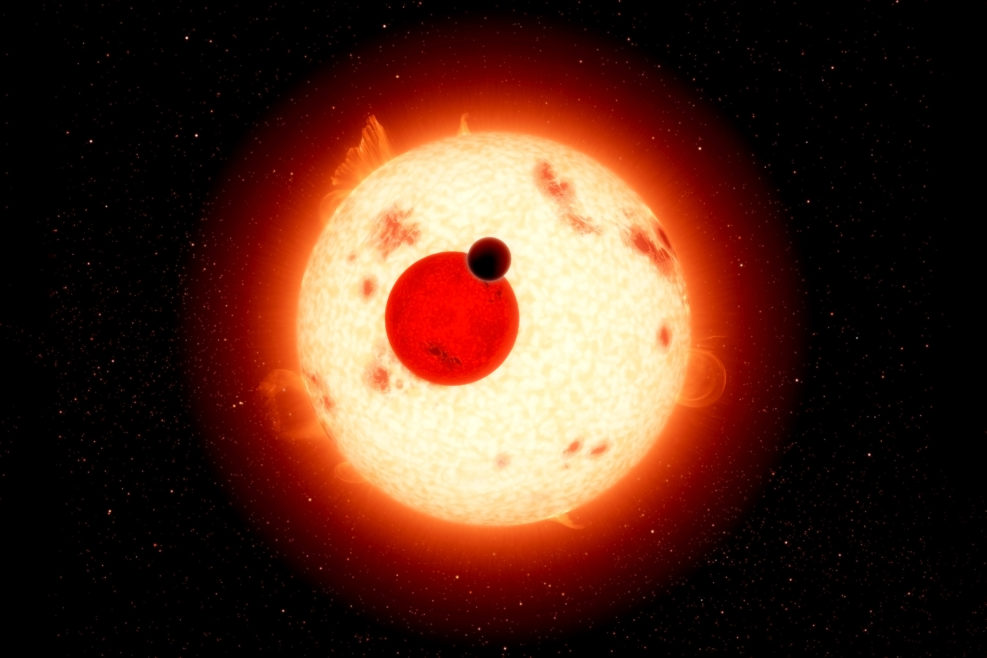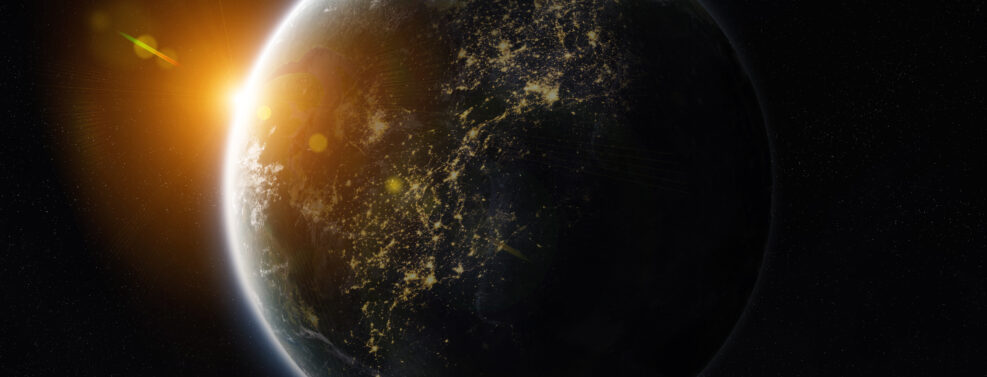
TagCarl Sagan


Scientists Have Been Recommending Changes to Science Education for Decades
The modern education system seems designed to squelch curiosityGary Smith describes the problems with today’s science in his new book Distrust: Big Data, Data-Torturing, and the Assault on Science. He recounts endless examples of disinformation, data torture, and data mining, much of which we already knew. Taken together, however, and as I described in this review, they are mind-blowing. He argues that many of these problems come from things scientists do such as p-hacking during statistical analysis, too little emphasis on “impact” in statistical analyses, outright data falsification, and the creation of the Internet, which can be a huge disinformation machine in addition to a valuable resource. In the last chapter, he also offers some solutions such as ending the artificial thresholds for p-values such as 0.05, requiring Read More ›

Look Out! The “Reptilian Brain” Is Still Here!
Many psychology students are subjected to this day to an exploded pop neuroscience myth endorsed by celebrity scientist Carl SaganDo we have a three-part brain — reptilian, mammalian, and human? Curiously, psychology textbooks teach us that we do and neuroscience studies teach us that we don’t. Who to believe? And how did that happen anyway? In the 1960s, Yale University physiologist and psychiatrist Paul D. MacLean (1913–2007) offered the triune brain theory. On that view, the reptilian brain (brain stem) controls things like movement and breathing; the mammalian brain controls emotion (limbic system); and the human cerebral cortex controls language and reasoning (neocortex). That might have been just another theory except that it was widely promoted by celebrity astronomer Carl Sagan (1934–1996) in his book, The Dragons of Eden (Random House, 1977). Praised in The Atlantic as “a rational, Read More ›

Why Science News Sucks — A Response to a Disgusted Physicist
There are reasons why science journalists can't usually be skeptical in the way that other journalists can. Here are some of themIn her usual forthright manner, theoretical physicist Sabine Hossenfelder asks, by blog post and Youtube video, “Why does science news suck so much? It’s hardly an original question but among her suggested answers are some thoughtful reflections, including 9. Don’t forget that science is fallible A lot of media coverage on science policy remembers that science is fallible only when it’s convenient for them. When they’ve proclaimed something as fact that later turns out to be wrong, then they’ll blame science. Because science is fallible. Facemasks? Yeah, well, we lacked the data. Alright. But that’d be more convincing if science news acknowledged that their information might be wrong in the first place. The population bomb? Peak oil? The new ice Read More ›

The UFOs Carl Sagan Was Convinced Of But Couldn’t Talk About
Sagan had already been denied tenure at Harvard, a sci-fi screenwriter reflects, and he couldn't afford to take more chancesSci-fi screenwriter Bryce Zabel recalls a memorable dispute with cosmologist Carl Sagan (1934–1996) in a parking lot forty years ago: The Voyager II unmanned spacecraft had been launched in August of 1977. Now, four years later, it was due to make its closest approach to Saturn on August 25, 1981. It was even going to send back photos in almost real time. I got an idea. Bryce Zabel, “Cosmic Collision: My UFO Debate with Carl Sagan” at Medium (August 24, 2021) His idea was to interview Sagan (remember the insignificant Pale Blue Dot that Earth is supposed to be?). I got to host Saturn and Beyond, and it was going to be Carl Sagan and me “live,” without commercial interruption, Read More ›

Carl Sagan Institute: Who Can See Us From Outer Space?
Most exoplanets are spotted when they dim a star’s light while crossing it. Earth does the same thingWe’ve all heard of astronomer Carl Sagan’s pale blue dot (Earth from a billion miles away, 1990). But Jaimie Green reminds us at Slate that Sagan (1934–1996) also published a paper in 1993 that looked at Earth from that distance as if it were an exoplanet. What signals would prompt them to suspect life here? That approach is still followed by astronomer and director Lisa Kaltenegger at Cornell University’s Carl Sagan Institute. One question is, where would an intelligent, technologically advanced civilization need to be to see us? Kaltenegger and her collaborators used new data from the European Space Agency’s Gaia mission to figure out which stars have, have had, or will in the next 5,000 years have the right Read More ›

How the Explanatory Filter Can Help Quash Conspiracy Theories
I found Dembski’s explanatory filter quite helpful in investigating voter fraud claimsWilliam Dembski’s explanatory filter is a decision strategy for identifying events that are unlikely to have happened purely by chance. The filter proceeds in three main steps, which can be illustrated via the plot device in Contact, a novel (1985) by Carl Sagan, followed by a film (1997): Eliminate events of large probability (necessity): A radio telescope receives a pattern of beeps and pauses. Perhaps the pattern seems strange to us but we could just be overinterpreting inevitable space noise. Eliminate events of medium probability (chance): The pattern turns out to be a sequence of prime numbers. However, large randomly generated numbers sometimes feature apparent patterns (five 5s in a row, for example) that don’t signify anything. Specify the event Read More ›

Why Should We Believe Atheists on the Subject of God?
Logic and evidence both point to the existence of God, whatever atheists may thinkNoting a recent article by philosopher Steve Meyer at The Federalist, neurosurgeon Michael Egnor comments, The public square is replete with books and articles written by atheist scientists claiming that cosmology or genetics or evolution properly understood disproves the existence of God. These atheist scientists profoundly misunderstand the implications of their science; they couldn’t be more wrong. As in his new book, The Return of the God Hypothesis, Dr. Meyer points to three particularly clear advances in modern science. Michael Egnor, “The God Hypothesis Versus Atheist Science Denial” at Evolution News and Science Today (April 5, 2021) The three arguments he addresses are ● The Big Bang: “The existence of a moment of beginning of our universe in an almost Read More ›

The Surprising Role Dolphins Have Played in the Search for ET
Dolphins, with their apparent alien intelligence, have been seen by scientists interested in ET as a stand-inIn a recent essay, Thomas Moynihan, a researcher with Oxford’s Future of Humanity Institute, puts the explosion of interest in dolphin intelligence in context: It began during the Space Race (1957–1998) — which helped fuel and fund the search for extraterrestrial intelligences. Its development also coincided withe Cold War (1946–1991) between the US and the USSR. In 1961, amid the growing tensions, neuroscientist John C. Lilly claimed that he had made contact with the first “alien” intelligence. But, as Moynihan says, Lilly “wasn’t talking about little green men from Tau Ceti, he was talking of minds much closer to home: bottlenose dolphins.” Why dolphins? As Moynihan recounts, from ancient times, mariners knew that dolphins were intelligent and modern zoologists like Read More ›

Is Intelligent Life Found in Oceans Inside Planets and Moons?
The Ocean Planets Hypothesis is that intelligent beings may flourish in the interior oceans of the moons of gas giant planets — or within exoplanets — but they are trapped thereReaders will recall that last year, we were looking at science writer Matt Williams’s analysis of the various reasons that we do not see extraterrestrials except at the movies. (See the links below.) Last time out in November, we looked at the Transcension Hypothesis: The extraterrestrial intelligences exist—but after a Singularity, they became virtual intelligences, exploring inner space at an undetectably small scale. Williams has reported since then on some additional hypotheses so this week we look at a more conventional approach — the “Ocean Worlds” Hypothesis, that icy planets may have interior oceans that harbor life: To illustrate, there’s the search for life that is going on right now in the Solar System, which is almost entirely focused on Read More ›

Space Aliens Could in Fact Be Watching Us
Using the methods we use to spot exoplanets. But if they are technologically advanced, wouldn’t they be here by now?
Maybe There Are Just Very Few Aliens Out There…
The Rare Earth hypothesis offers science-based reasons that life in the universe is rareRecently, science and science fiction writer Matt Williams has been writing a series at Universe Today on why extraterrestrial intelligences never make contact with us. Last week, we looked at the hypothesis that, to avoid the heat destruction of their advanced technology, the aliens have put themselves into a digital slumber until the universe cools down. This week, let’s look at a quite different approach, which Williams outlines in “Beyond “Fermi’s Paradox” IV: What is the Rare Earth Hypothesis?” (July 29, 2020): That is “the possibility that life-bearing planets like Earth are just very rare.” We don’t see aliens because they are very uncommon: This is what is popularly known as the “Rare Earth Hypothesis,” which argues that the emergence Read More ›
